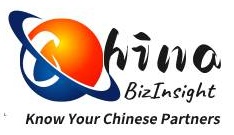When considering a business partnership with a Chinese company, one of the most critical steps is verifying the identities and backgrounds of its directors and shareholders. This isn’t just a formality—it’s a fundamental part of due diligence that can protect your business from fraud, compliance risks, and costly misunderstandings.
In this guide, we’ll walk you through why this verification matters, where to find reliable information, what to look for, and how to interpret the data you uncover. By the end, you’ll have a clear roadmap for confidently assessing your potential Chinese partners.
Why Verifying Directors and Shareholders Matters
In China, as elsewhere, the people behind a company shape its credibility, operational integrity, and long-term viability. But in a market where information asymmetry is common, international businesses often struggle to access accurate and up-to-date records.
Here’s why this verification is non-negotiable:
- Preventing Fraud: Confirming that directors and shareholders are real, legitimate individuals or entities helps avoid shell companies or fraudulent setups.
- Assessing Governance: The experience and reputation of key personnel can indicate the company’s management quality and stability.
- Ensuring Compliance: Understanding ownership helps you comply with international regulations, such as anti-money laundering (AML) and sanctions screening.
- Mitigating Risk: Shareholder structure can reveal concentration of power, related-party transactions, or potential conflicts of interest.
Where to Find Official Information
China has made significant strides in improving corporate transparency. The primary source for official company data is the National Enterprise Credit Information Publicity System (NECIPS), maintained by the State Administration for Market Regulation (SAMR). This system provides registered details of all Chinese companies, including directors, shareholders, and registered capital.
Other useful sources include:
- Local Administration for Market Regulation (AMR) offices
- Ministry of Commerce records for certain industries
- Securities regulator disclosures for listed companies
- Intellectual Property Administration for patent and trademark holders
However, many of these platforms are only available in Mandarin, and access may require a local presence or specialized knowledge. This is where professional services like ChinaBizInsight can help—we offer English-language reports and verified data extracts for international clients.
Key Details to Check in Director and Shareholder Records
When reviewing director and shareholder information, pay attention to the following:
1. Identity and Legal Status
- Full name and ID/passport number
- Role (e.g., legal representative, executive director, supervisor)
- Appointment date and term
2. Shareholding Structure
- Percentage of ownership
- Type of shareholder (individual, corporate, state-owned)
- Paid-in capital vs. subscribed capital
3. Historical Changes
- Track record of director appointments/resignations
- History of equity transfers
- Consistency in management and ownership
4. Related Parties
- Other companies where the same person serves as director or shareholder
- Potential conflicts of interest or complex group structures
Understanding the Legal Framework
China’s Company Law, revised in 2023 and effective from July 1, 2024, sets clear requirements for company registration, director duties, and shareholder rights. Key takeaways include:
- Directors and senior management owe a duty of loyalty and care to the company.
- Shareholders’ identities and contributions must be accurately disclosed.
- Any changes to directors or shareholders must be filed with the company registry in a timely manner.
Failure to comply can result in fines, restrictions, or even invalidation of company acts.
Common Challenges and How to Overcome Them
Even with official sources, verifying Chinese company stakeholders isn’t always straightforward. Here are some common hurdles and how to address them:
- Language Barriers: Official documents are in Chinese. A certified translation may be needed for legal use overseas.
- Inconsistent Data: Discrepancies can occur between different registries or over time. Cross-referencing multiple sources is recommended.
- Complex Ownership Chains: Chinese companies often have layered or offshore holding structures. A deeper due diligence report may be necessary.
- Privacy Protections: Individual ID numbers are often partially masked. Full details may require authorization or a legitimate business need.
For a more in-depth profile, consider a Director and Shareholder Risk Report, which compiles legal, financial, and operational signals into a single due diligence package.
Case Example: A Glimpse into a Top Chinese Private Company
To illustrate, let’s look at a well-known firm—Huawei Investment & Holding Co., Ltd. Public records show its legal representative is Liang Hua, and its major shareholder is a holding entity largely owned by an employee stock ownership plan. This structure is legal and common, but it requires careful analysis to understand who ultimately controls the company.
Huawei’s transparency in disclosing its board and ownership has helped build trust with global partners. Not all companies are as forthcoming—which is why verification is key.
Tools and Services for Reliable Verification
For international businesses, we recommend using the following:
- Official Enterprise Credit Report – The foundational document for any Chinese company check.
- Custom Due Diligence Reports – Tailored to your risk appetite and transaction type.
- Director & Shareholder Verification Service – Focused on individuals and their network of affiliations.
If you’re looking for a reliable starting point, you can download the latest list of the Top 500 Chinese Private Enterprises here. This can help you identify potential partners and begin your background checks.
Final Tips Before You Sign
- Always use multiple sources to verify identities.
- Look beyond the surface—sometimes a “clean” record hides risks in related entities.
- When in doubt, consult a local expert or use a trusted third-party service.
Verifying Chinese company directors and shareholders isn’t just a box-ticking exercise. It’s an essential practice for building successful, secure, and sustainable partnerships in one of the world’s most dynamic markets.
If you need assistance with official document retrieval, translation, or due diligence, explore our range of company verification and business credit reports tailored for international clients.
